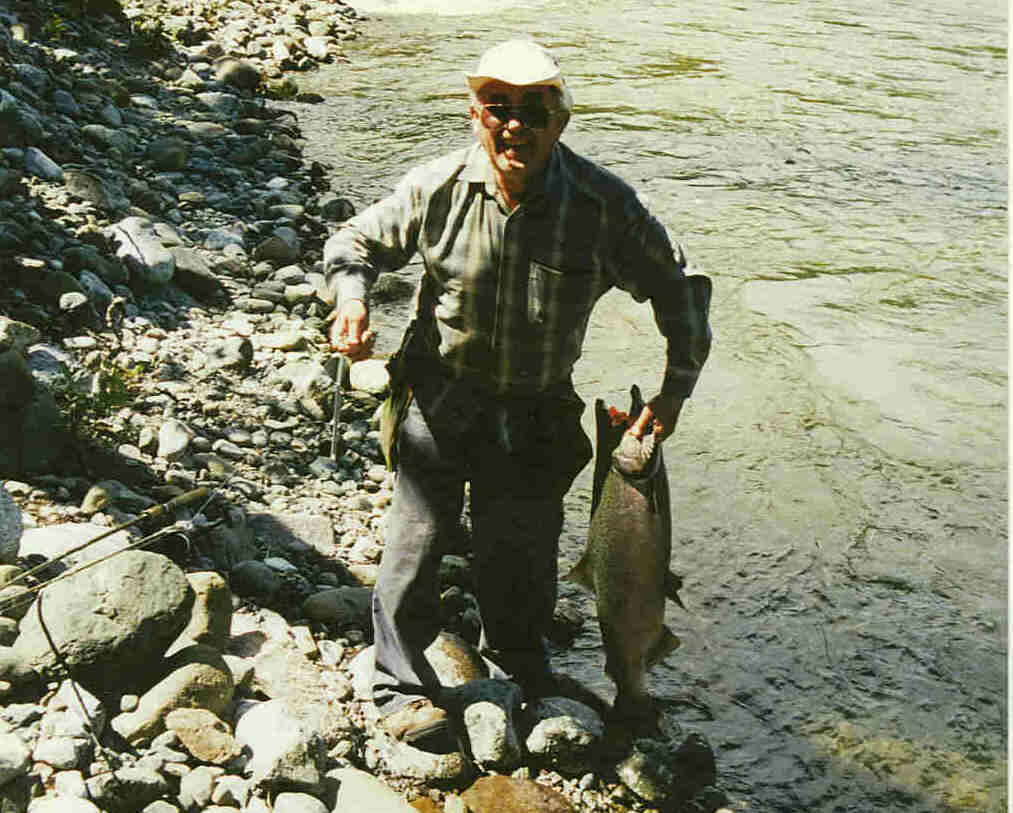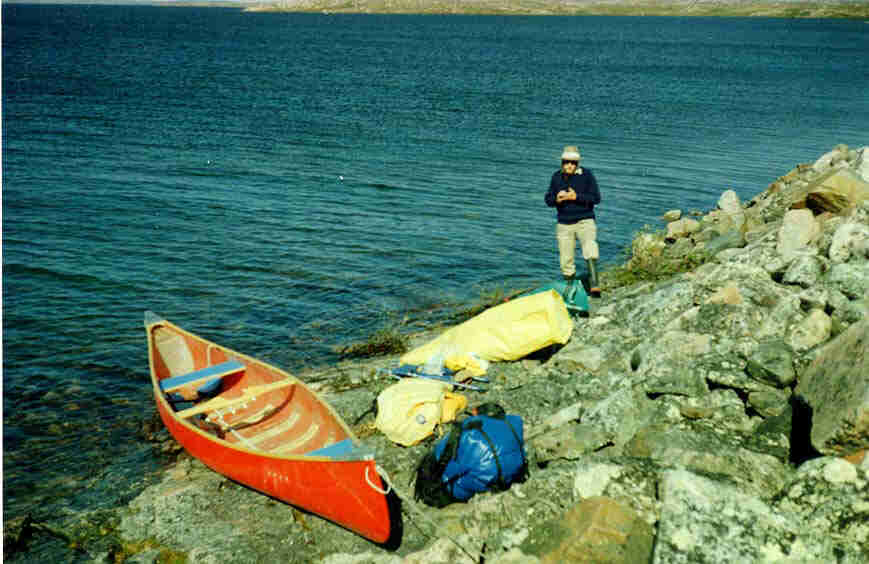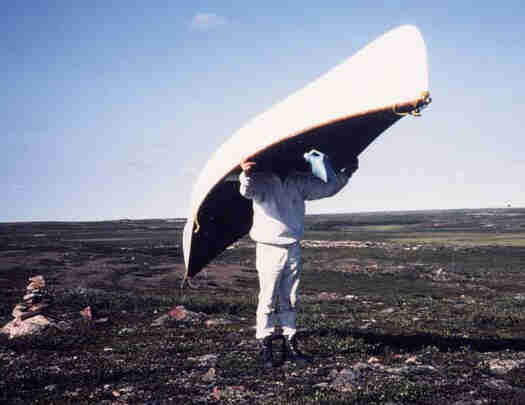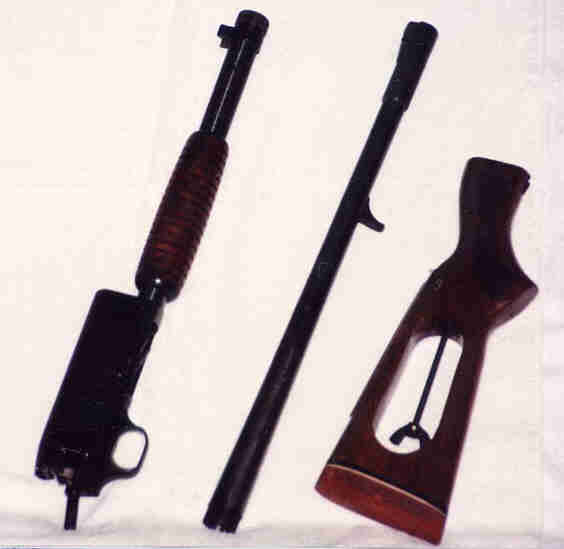April 3, 2001
![]()
My Survival Gun for Wilderness Canoeing
.![]()
Canoeing and kayaking has been a life long enjoyment for my family and me. Traveling on many of Canada's most beautiful rivers and lakes with a canoe is something I will always remember. During my working days canoeing was mostly a weekend sport close to home. In Alberta with the many fast mountain rivers, getting to a river is never much of a problem. Camping and fishing of course is part of canoeing, with the whole family participating.


Me and Chinook Salmon
We belonged to a canoe club, which makes the car shuttle convenient. As an experienced canoeist I acted as a tour leader for many of the advanced canoe tours.
We also had facilities to build our own 18-ft Prospector and the 16-ft Rocky Mountain Cruiser fiber class canoes. The former is a true wilderness tripping canoe weighing only 70lbs and is quite easy to carry by one person. The building of it requires a careful lay up for this weight. With a payload of 750 lbs. it is still quite agile and handles well in white water.
We used to build a new canoe for each trip and sell it to the Inuit on our destination for the price of the materials. Saves on expensive shipping costs.


McKay Lake Drop off and Dickson's Canyon Portage
After retiring in 1989 I decided to do some serious wilderness canoeing in the North -West Territories, Alaska, and the West Coast. Traversing a large part of the Territories to Baker Lake on the Hanbury and Thelon River. North on the Coppermine to Arctic Ocean. The Lockhart drainage system back to Yellow Knife along the North shore of the Great Slave Lake. The Nahanni River with the Rock Gardens and Virginia Falls. The Mountain River. The beautiful Spatsizi and the Stikine River to Wrangell Alaska and through the Coastal Range with its big Glaciers.
These Rivers represent several thousands of miles of pure wilderness travel. Most all of these rivers were paddled with only one canoe and two paddlers. Wilderness canoeing with two people is a survival game with all the chips on your wits. I really do not recommend the single canoe to anyone, but there is nothing quite like it.
The question and selection of a survival gun created many pros and cons. Weight is the main consideration, which includes ammo. We considered all the known bears, specially the Black bears along the Great Slave Lake. Easy food gathering requires a gun that can bag a larger animal and smaller ones as well. The final choice came down to a time proven quality 12 gauge, take down, shortened, pump gun.
The Model 37 Ithaca made the grade. The barrel was shortened to 17.5" with .75"trued concentric with the bore. A sleeve 3"x 0.950" long sweated to the end of the barrel to incorporate a screw-in choke. Total barrel and pack length 19.75". Weight is 6 lbs-2oz. This is a formidable defense weapon with a six round capacity.
A jug choke of 0.005"x1.25" in back of the screw-choke in the sleeve was added for good pattern with the imp. cyl. choke. A .25" wide wood ramp taped to the sleeve gave me a chance to adjust the height of impact, with both shot and slugs. The final height of the ramp is .160". The forcing cone lengthened to 1.5 " for recoil reduction completed the barrel. In order to shorten the total length of the gun for packing, I designed a simple detachable stock. To access the wing nut a 5"x 2" hole was cut in the side of the butt, leaving 3/4" wood on top and bottom.
The hole extents to the stock bolt washer seat. The bolt nut was turned off and a large wing nut welded on. To prevent the loss off the stock bolt a tight rubber plug behind the thread keeps the bolt from falling out. The stock has a 1" soft recoil pad.
The stock and the front ramp were regulated at 10 yards to shoot dead on with both #5 shot and 1oz slugs. Fired at exactly the way you shoot a shotgun without aiming. The gun shoots where you look. It is called instinctive pointing. The ramp is picked up by your peripheral vision which directs your hand as long as your focus stays on the target and not on the front of your gun.

Ithaca Model 37
You look at the target throw the gun to your shoulder and fire 3 fast shots. You have to see the accuracy to believe it. I shot the gun at regular Skeet almost as good as my regular Skeet gun. The gun swings so fast you don't need any lead, or so it seems. But if you toddle you will shoot behind the bird. Being used to shoot a double, the pump gun takes getting used to it.
For a bear attack situation the gun is loaded with the first shot being #5 lead, follow up shots are slugs. That is the theory. I never had to use the gun for defense, or major food gathering, but shot some Arctic Hares and Ptarmigan.
They are tough eating and you practically have to eat them raw, because for lack of firewood on the tundra. We eat with the Inuit and they eat raw caribou all the time, not bad once you get used to it. Raw Arctic Char is excellent eating and air-dried it makes good travel food. Air-drying is incredibly fast in the Tundra.
The big question is do you really need a gun for wilderness travel. If you are an inexperienced canoeist and travel in groups of three boats or more there is no need for a gun, perhaps one for the leader. If you can't read white water and smash up your canoe in a rapid and loose all your gear, a gun on the bottom of the river is not much good either. For long extended trips a gun is handy for supplementing your food with small game. For such a 22 Rim fire Magnum single shot will take care of any food gathering. Your most important survival items are your canoe and paddle, if you loose them you are in a bit of predicament, or as they say "up the creek without a paddle".
Rescue service in the north used to be free, but many so-called wilderness travelers have abused the service. The Canadian Air rescue will send you a bill now. I know of four instances were air rescue was called in via emergency locator beacon, that were not really emergencies. With today's technology it is hard to get lost anywhere. But technology has its shortcomings, like dropping your GPS in the water. Not like a compass or sextant, which don't mind the water, and the stars, sun and horizons will arrive sooner or later.